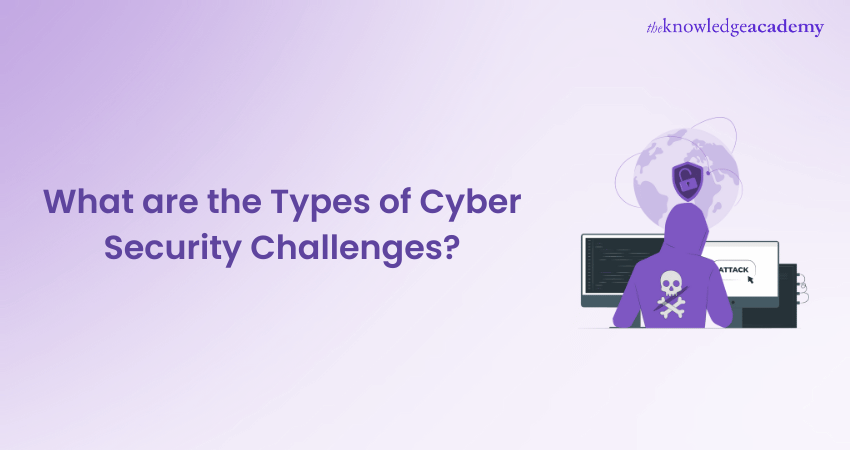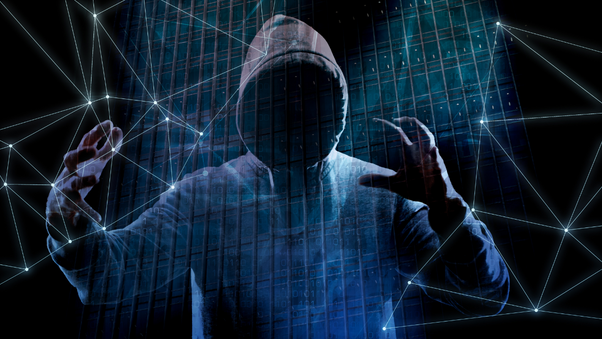We may not have the course you’re looking for. If you enquire or give us a call on 01344203999 and speak to our training experts, we may still be able to help with your training requirements.
We ensure quality, budget-alignment, and timely delivery by our expert instructors.

Cyber Security is also known as Information Technology (IT) Security or Electronic Information Security. It is the process whereby cyber threats and risks faced by the network and systems of an organisation are protected. Data has become essential to business operations, and companies must safeguard their data at all costs. According to X-Force Threat Intelligence Index 2022 by IBM Security, there is a 33% increase in cyberattacks due to vulnerability exploitation.
An organisation can improve its image and minimise the adverse impact of cyber-attacks by securing its data. However, securing the network and systems is difficult, as there are several challenges and issues that businesses have to face. In modern times, with easy internet access, cyber criminals find it easy to execute a malicious attack on an unsuspecting system with vulnerabilities.
Table of Contents
1) Importance of Cyber Security?
2) What are the Challenges of Cyber Security?
3) Types of Cyber Security Threats
4) Conclusion
Join Cyber Security Training courses to learn how to avoid and protect against Cyber Security Threats.
Importance of Cyber Security

The internet has become pervasive as it is used in all systems, activities, and functions. The proliferation of the internet has made computers and networks susceptible to cyberattacks. Here the role of Cyber Security is essential. It forms a necessary part of the day-to-day functioning of businesses and enables them to focus on securing their systems and network. Cyber Security is important because it secures and protects companies' data. It acts as a roadblock for cybercriminals from accessing sensitive information of organisations. Having advanced Cyber Security systems also enhances productivity and, therefore, the company's overall performance.
Enhance your understanding of Cyber Security with Cyber Security Awareness course.
What are the Challenges of Cyber Security?

Every year companies spend millions on securing their systems and network. However, as technology advances, hackers and cybercriminals also gain access to various methods to execute a cyberattack. Defending online systems is increasingly becoming difficult for organisations because new threats and challenges of Cyber Security emerge. Following are some of the main current Challenges in Cyber Security.
Increase in Supply Chain Attacks
Supply chain attacks are also known as Value-Chain or Third-Party Attacks. It occurs when a cybercriminal infiltrates a company's systems and network through a person with access to the data and infrastructure of the organisation. In recent years supply chain attacks have multiplied as the attackers have increased access to resources and tools. The primary goal of such attacks is to gain access to source codes, build processes, or alter the systems and network by infecting legitimate apps and distributing malware. In such attacks, cybercriminals look for the unsecured network protocol, unsafe coding practices, and unprotected servers.
The SolarWinds attack is a perfect example of such an attack. In this incident, hackers infiltrated the government and other systems using a compromised update to SolarWinds' Orion software.
Cloud Services are among the Primary Targets for Cyberattacks
The recent COVID-19 pandemic gave rise to remote working and work-from-home concepts. As a result, most of the work is now on cloud-based systems. The emergence of Software-as-a-Service (SaaS) solutions has reduced some of the most crucial gaps, like the need for online meetings and file sharing. Further, cloud-based infrastructure and systems are easily accessible and can be used regardless of geographic location. Even though cloud-based systems are robust, there are still many security gaps that remain. As a result, cyber threats continue to affect companies and their operations. The number of businesses facing data breaches and cyberattacks after adopting SaaS technology is increasing rapidly. These threats can be attributed to the significant increase in the vulnerabilities and risks in cloud-based systems.
Become a Pro at Cyber Security with a Certified Cyber Security Professional (CCS-PRO) course.
Significant rise in Ransomware Attacks
Ransomware attacks became prominent with the WannaCry attacks in 2017. Since then, several ransomware groups have become active and are causing significant losses and issues to the Cyber Security systems of companies. These attacks involve cybercriminals hacking into users' data to stop them from accessing it and demanding a ransom for such access. Such attacks are critical to businesses because they cannot access sensitive information blocked by cyber criminals. It has been observed that even if the hackers are paid their ransom, they do not release the data. Instead, they demand more money. In recent years, the number of Ransomware attacks has risen because executing this attack is very simple. Such attackers target not only businesses and individuals but healthcare and education sectors as well.
Mobile Devices are the new Cyber Security Risks
Mobile devices like personal laptops and tablets are increasingly being used in workplaces. The rise of the COVID-19 pandemic has forced more people to work from their homes. Companies have allowed employees to use their devices to work. As a result, the productivity of many organisations has increased. However, these devices are mainly unsecured because individuals do not use extensive security measures and software; their devices become vulnerable to cyberattacks and, as a result, threaten corporate systems and networks. The increase in such attacks means personal devices are more at risk, and hackers can easily access companies' valuable information.
Blockchain and Cryptocurrency Attacks
The development of new technologies, such as Blockchain and Cryptocurrencies, has played a critical role in revolutionising physical currencies. These present a significant challenge to data security. Today, digital currencies and wallets are the primary targets for hackers and cybercriminals. Attack variants like Eclipse and Sybil have made Blockchains and Cryptocurrencies an easy target for cybercriminals. Blockchain technology has moved beyond the infancy stage but has yet to attain stability. With several vulnerabilities, this technology is a relatively easier target for hackers.
Recently, the number of attacks on Blockchain technology has increased significantly. Thus, it poses a prominent risk for those businesses that use it to store and share data at different levels. As these attacks increase, Blockchain's effectiveness reduces. Thus, it becomes a key challenge for experts to use it to record safely and distribute information.
Learn ways to reduce Cyber Security risks with the Cyber Security Risk Management course.
Vulnerabilities in Software
Technological developments have changed the way businesses are run and managed. However, every software has some weakness that compromises its security and overall effectiveness. Since every software has a weakness, they are exposed to cyberattacks. Due to this reason even the most critical software tends to fall victim to cyber threats. As a result, the overall security of the organisation also gets compromised. In such situations, there are better solutions than updating the software, even though it is an effective means of making the system safe and secure. Older versions or unpatched software are the easier targets for cybercriminals. These attacks are mostly carried out at a mass level, i.e., on several individual systems simultaneously.
Insider Attacks
Even though most Cyber Security concerns stem from the outside world, these risks can sometimes come from within the organisation. Unknowingly, employees can leave a digital fingerprint on the internet, which cyber criminals can exploit to attack a company. Further, sometimes, employees with malicious intent can leak sensitive and secret information to competitors that can compromise the IT security of the company. Such events cause significant damage to the company and put its existence in great danger. The company can suffer reputational and financial losses.
Outdated Hardware
Another major challenge for Cyber Security is the use of outdated hardware. Many companies and even individuals use obsolete hardware. On the other hand, companies use the latest software and its versions to protect the data. The compatibility issue arises here because the old hardware does not support the latest systems and software. As a result of the compatibility issue, exposure to cyber-attacks increases manyfold and puts the systems and network at risk. Usually, companies do not upgrade and update their hardware because they are expensive. Due to this, the risk of a cyber-attack increases.
Cyber Security career is rewarding. Grow your career with the Microsoft Cybersecurity Architect SC100 course.
Phishing Attacks
Phishing is a social engineering attack. Its primary use is stealing data such as login credentials, credit card numbers, account details, etc. These are different from Ransomware attacks in that the hacker does not block the user from accessing and using the data. Instead, phishing attacks encourage users to click on unknown links unknowingly.
Types of Cyber Security Threats

Cyber threats are increasing rapidly as new threats emerge, making securing the digital world difficult and complicated. Cybercriminals use various paths to cause harm to the server and gain access to the data. There are several types of Cyber Security threats; some are listed below:
a) Malware - It is also known as malicious code or malicious software. It is inserted in a system to compromise security and gain access to the stored data. A malware attack is carried out secretly and can cause significant damage to the applications or operating system. Today, it is the single most commonly known threat to systems. Once implanted in a system, it can cause widespread damage; to fix this, the organisation must put in significant effort.
b) Ransomware - The primary objective of this threat is to extort ransom from the user for access to the data stored in the system. It asks the user to pay using online payment methods, mostly cryptocurrency, to regain access to their system or data. Ransomware enters a computer network or system and encrypts the files and data using public-key encryption. Detecting this threat is almost impossible.
c) Spam and Phishing - These are the most common Cyber threats. Spam consists of unwanted messages and emails. Phishing is a form of social engineering that focuses on getting access to sensitive data. Phishing attempts appear to be from someone trustworthy and reliable. The objective of these threats is to gain access to users' information.
Learn Network Security with Introduction to System and Network Security course.
Conclusion
After reading this blog, we hope you understand the biggest Cyber Security Challenges 2023. Using outdated hardware is one of the biggest challenges affecting Cyber Security. In addition, using mobile and personal devices also adds to the issue of Cyber Security. This blog focuses on helping you to become more aware of Cyber Security, its challenges, and threats.
Upcoming IT Security & Data Protection Resources Batches & Dates
Date
 Cyber Security Awareness
Cyber Security Awareness
Fri 9th May 2025
Fri 8th Aug 2025
Fri 5th Dec 2025






 Top Rated Course
Top Rated Course




 If you wish to make any changes to your course, please
If you wish to make any changes to your course, please


